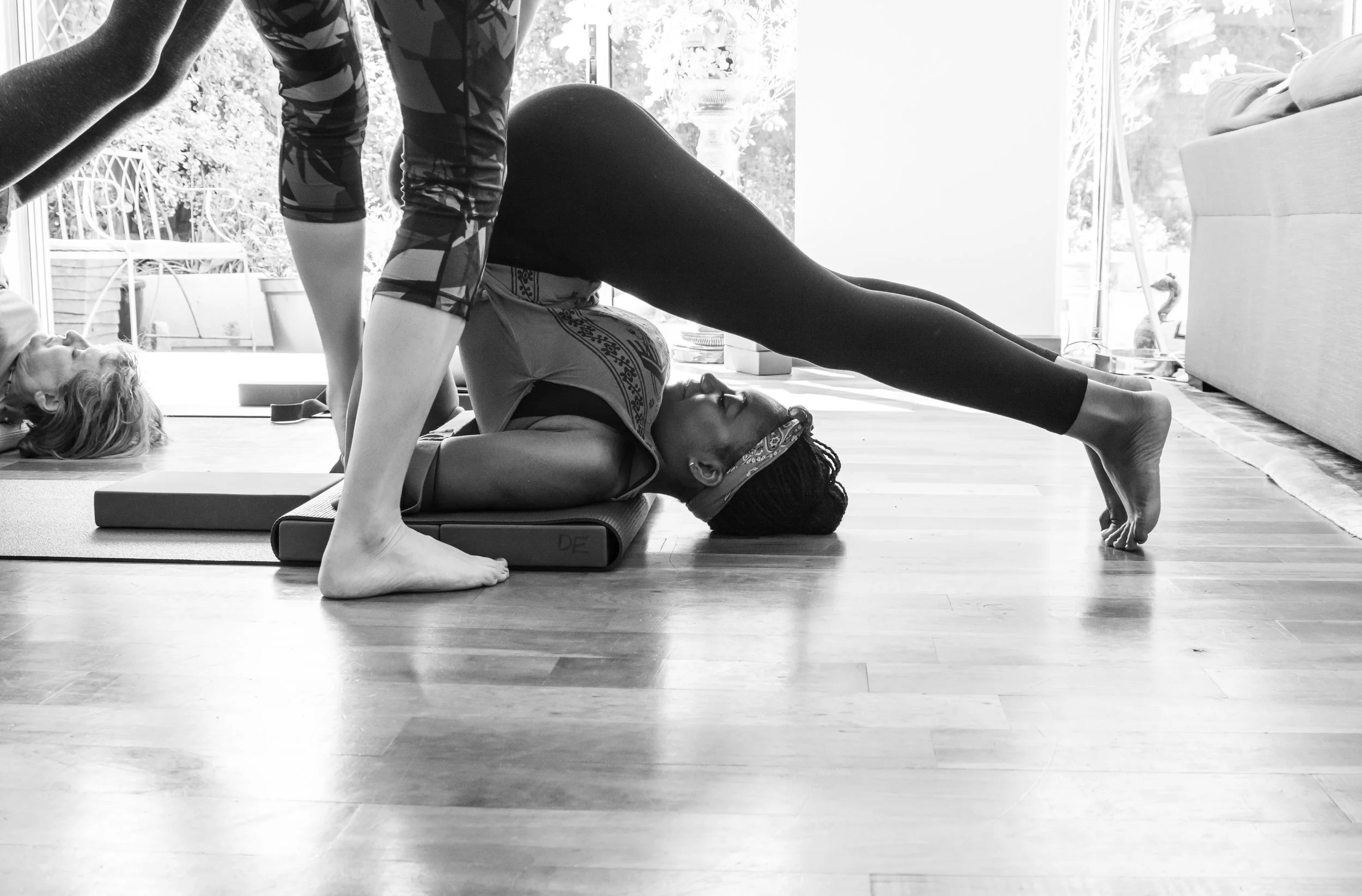Life can be tough, right?
The past few years have been a rollercoaster of global crises, and, for most of us, a few personal ones thrown in for good measure too.
When the proverbial hits the fan, it’s useful to have a sense of self. To know how or when we need to ask for help, to know when to stop and so on. But for many of us, this self-knowledge only comes through bitter experience.
However, there is another way we can build a sense of self-knowledge which is deeply useful in these tough times.
This self-knowledge comes through our yoga practice.
What is self-knowledge?
Self-knowledge, in Sanskrit, Svadhyaya, is one of the five Niyamas, part of the first limb of yoga.
Without the discipline of self-knowledge we cannot truly practice yoga, without practicing yoga, we cannot truly know ourselves. So, like the chicken and the egg conundrum, which comes first?
According to BKS Iyengar, “Your practice is your laboratory, and your methods must become ever more penetrating and sophisticated. Whether you are in asana or doing pranayama, the awareness of the body extends outward, but the senses of perception, mind, intelligence should be drawn inward.”
Action: When we stand on our two feet, spreading the toes, moving our weight back onto our heels, we draw our minds out of the fug of habitual action into the clarity of intelligent perception.
How can we cultivate it?
Self-knowledge begins with self-awareness. Iyengar again, with yet another brilliant sentence:
“Self-awareness is the opposite of self-consciousness.”
Our relationships with ourselves are (mostly) extremely complex. We are conditioned by our upbringing, societal norms, by social media, peer pressure and so on. When we begin practising yoga we are usually in two camps:
“I’m actually pretty good at this yoga lark – I can touch my toes easily in this pose.”
OR
“I’m awful at yoga, I’m so stiff, everything hurts, I’ll never be as good as other people.”
While being at opposite ends of the spectrum, both responses are self-conscious. A self-conscious response can lead to over-stretching of the muscles, either due to showing off how good you are, or through panicking that you’re not good enough. Neither one is very useful in the long run.
Action: The pose which most of us find easiest to be self-aware in at the start is Savasana. Lying still and quiet with the eyes closed we can use the gentle rhythm of the breath to just observe the body and mind. Then we gradually learn to take that quiet into the rest of our poses.
How to get out of our heads
To become self-aware and not self-conscious requires practice and self-compassion. Iyengar puts this very neatly:
“When you are self-aware, you are fully within yourself, not outside yourself looking in. You are aware of what you are doing without ego or pride.”
The increasing use of social media and the focus on what we look like is a difficult habit to break. We tend to see ourselves as if from the outside, but we forget that we live inside our bodies. By truly inhabiting ourselves we can take a break from all that noise that goes on in our heads.
Action: The invocation practiced at the beginning of each yoga class is a way to move our attention from outside – in. Sitting cross-legged we bring our attention first to our posture. Then to the breath. Then to the movement and vibration of the breath through the sung invocation. We remember that we are just part of the long tradition of yoga practitioners, as well as a way to be unified with the other students in the room with us.
How to build a practice
Our noisy heads are one of the main obstacles to getting on our mats in the first place. Most of my students say, ‘I know I should do a yoga practice, but…’ and there are so many ‘buts’ that get in the way.
I can completely relate, as life has a habit of getting in the way of a whole host of good intentions.
The thing to remember is that your yoga practice is there for you, not the other way around. We are all different beings and we each need to find what works for us (self-knowledge…)
For some people getting up half an hour earlier than the rest of the household and doing a pyjama practice is what works.
For others the extra sleep is too important, and they find a way to fit 40 minutes of practice into their lunchbreak.
Or for the extra-busy person, yoga poses can be built into everyday life; Tadasana in the queue, Vrksasana while brushing your teeth, a quick Downward dog while waiting for the kettle to boil. It goes without saying that an undisturbed hour of practice is going to be more beneficial, but a quick pose here and there throughout the day is also a practice.
Try adding in one pose to your daily routine, and see start to reap the benefits of self-knowledge that come with it.

